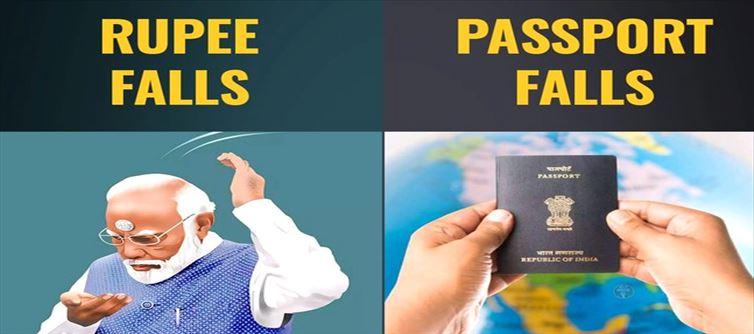
In 2013, when the indian rupee experienced a significant dip, it felt like the entire country was shouting from the rooftops. Politicians, celebrities, and social media influencers took to every platform available to express their outrage. news channels ran endless debates, hashtags trended, and even bollywood stars found the time to coin clever quips about the currency's "health." It was as if the fall of the rupee was the ultimate crisis, and everyone had an opinion.
Fast forward to today, and the rupee is at a historic low, hovering around ₹86 to the dollar with projections that it might soon touch ₹90. Strangely, the uproar of 2013 has turned into a deafening silence. The same politicians, who once called the rupee's decline a "national shame," are conspicuously quiet. social media stars who previously masqueraded as economists are now occupied with posting vacation photos and endorsements. Not even a whisper from the ministers who are supposed to reassure the public.
2013: Outrage Olympics
Let’s rewind to 2013. Back then, narendra Modi, the then chief minister of Gujarat, was leading the charge against the UPA government, using the rupee’s fall as ammunition. He labeled the rupee as being in the "ICU" and accused the government of losing control of the economy. Every speech of his was peppered with statements about how a falling rupee symbolized India's vulnerability to foreign powers.
Joining him were bollywood stars like shilpa Shetty, who likened the rupee to a patient on a ventilator, and even amitabh bachchan, who joked about "rupee" becoming a new english verb for "falling." Anchors and editors on prime-time tv huffed and puffed, declaring that India's economic credibility was in shambles.
2025: Silence Speaks Volumes
Now, with the rupee in worse shape than it ever was in 2013, the atmosphere is eerily different. The same narendra Modi, now the Prime minister, has not uttered a single word about the rupee’s historic decline. His ministers, who should be reassuring the public, are nowhere to be found. Instead of explanations or accountability, there’s just an uncomfortable silence.
social media influencers and celebrities who once acted as guardians of the rupee are now mysteriously absent from the conversation. Where are the witty tweets, the clever jabs, the outraged debates? Has the rupee’s decline suddenly stopped being a crisis?
A Tale of Hypocrisy
The contrast between then and now isn’t just puzzling—it’s hypocritical. Back in 2013, the rupee's fall was framed as a failure of leadership and governance. Today, it’s conveniently brushed aside as an inevitable global trend. When economists under the UPA government explained the rupee's fall as being influenced by external factors, they were mocked. Now, even that level of engagement is absent.
The Middle Class Left in the Lurch
The impact of this rupee decline is felt most by the middle class—the same demographic that rallied behind the outrage in 2013. Travel has become prohibitively expensive, imported goods cost more, and savings invested in the stock market are shrinking as foreign investors pull out. Yet, their concerns are ignored because they make up only 2% of the taxpaying population—too insignificant to matter in electoral calculations.
Why the Silence?
Perhaps the silence reflects a fear of backlash in an era where criticism is equated with disloyalty. Or perhaps the government and its supporters realize that it’s easier to focus on optics than to address economic realities. Either way, the rupee’s fall—and the lack of response to it—reveals a troubling inconsistency in how crises are acknowledged and addressed.
Conclusion: A Double Standard Exposed
The rupee’s current state is not just an economic story; it’s a story of selective outrage and shifting priorities. If the rupee’s decline was a national crisis in 2013, why isn’t it one now? The silence from ministers, celebrities, and influencers is as telling as their noise was a decade ago.
In the end, the message is clear: outrage is optional, accountability is negotiable, and the middle class is left to fend for itself. The rupee may be falling, but the voices that once cried out in its defense have fallen silent, leaving the public to wonder: who will speak for them now?




 click and follow Indiaherald WhatsApp channel
click and follow Indiaherald WhatsApp channel